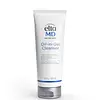What's inside
What's inside
 Key Ingredients
Key Ingredients

 Benefits
Benefits

 Ingredients Side-by-side
Ingredients Side-by-side

Caprylic/Capric Triglyceride
MaskingGlycerin
HumectantWater
Skin ConditioningSucrose Laurate
EmollientSucrose Stearate
EmollientDecyl Glucoside
CleansingSqualane
EmollientPhenethyl Alcohol
MaskingCaprylyl Glycol
EmollientEthylhexylglycerin
Skin ConditioningSodium Hyaluronate
HumectantSodium PCA
HumectantTocopherol
AntioxidantRosa Centifolia Flower Extract
AstringentResveratrol
AntioxidantTerminalia Ferdinandiana Fruit Extract
AntioxidantEuterpe Oleracea Fruit Extract
Chamomilla Recutita Flower Extract
MaskingCamellia Sinensis Leaf Extract
AntimicrobialHippophae Rhamnoides Fruit Extract
Skin ConditioningCitrus Aurantifolia Peel
Skin ConditioningCaprylic/Capric Triglyceride, Glycerin, Water, Sucrose Laurate, Sucrose Stearate, Decyl Glucoside, Squalane, Phenethyl Alcohol, Caprylyl Glycol, Ethylhexylglycerin, Sodium Hyaluronate, Sodium PCA, Tocopherol, Rosa Centifolia Flower Extract, Resveratrol, Terminalia Ferdinandiana Fruit Extract, Euterpe Oleracea Fruit Extract, Chamomilla Recutita Flower Extract, Camellia Sinensis Leaf Extract, Hippophae Rhamnoides Fruit Extract, Citrus Aurantifolia Peel
Caprylic/Capric Triglyceride
MaskingGlycerin
HumectantWater
Skin ConditioningCoconut Alkanes
EmollientSucrose Palmitate
EmollientSucrose Laurate
EmollientLimnanthes Alba Seed Oil
Skin Conditioning1,2-Hexanediol
Skin ConditioningCaprylyl Glycol
EmollientCoco-Caprylate/Caprate
EmollientTocopheryl Acetate
AntioxidantLactobacillus/Pumpkin Ferment Extract
Skin ConditioningTocopherol
AntioxidantMelia Azadirachta Flower Extract
Skin ConditioningMelia Azadirachta Leaf Extract
Skin ConditioningOcimum Sanctum Leaf Extract
Skin ConditioningLactobacillus Ferment
Skin ConditioningCurcuma Longa Root Extract
MaskingOcimum Basilicum Flower/Leaf Extract
TonicCorallina Officinalis Extract
Skin ConditioningCaprylic/Capric Triglyceride, Glycerin, Water, Coconut Alkanes, Sucrose Palmitate, Sucrose Laurate, Limnanthes Alba Seed Oil, 1,2-Hexanediol, Caprylyl Glycol, Coco-Caprylate/Caprate, Tocopheryl Acetate, Lactobacillus/Pumpkin Ferment Extract, Tocopherol, Melia Azadirachta Flower Extract, Melia Azadirachta Leaf Extract, Ocimum Sanctum Leaf Extract, Lactobacillus Ferment, Curcuma Longa Root Extract, Ocimum Basilicum Flower/Leaf Extract, Corallina Officinalis Extract
 Reviews
Reviews

Ingredients Explained
These ingredients are found in both products.
Ingredients higher up in an ingredient list are typically present in a larger amount.
This ingredient is an emollient, solvent, and texture enhancer. It is considered a skin-softener by helping the skin prevent moisture loss.
It helps thicken a product's formula and makes it easier to spread by dissolving clumping compounds.
Caprylic Triglyceride is made by combining glycerin with coconut oil, forming a clear liquid.
While there is an assumption Caprylic Triglyceride can clog pores due to it being derived from coconut oil, there is no research supporting this.
Learn more about Caprylic/Capric TriglycerideCaprylyl Glycol is a humectant and emollient, meaning it attracts and preserves moisture.
It is a common ingredient in many products, especially those designed to hydrate skin. The primary benefits are retaining moisture, skin softening, and promoting a healthy skin barrier.
Though Caprylyl Glycol is an alcohol derived from fatty acids, it is not the kind that can dry out skin.
This ingredient is also used as a preservative to extend the life of products. It has slight antimicrobial properties.
Learn more about Caprylyl GlycolGlycerin is already naturally found in your skin. It helps moisturize and protect your skin.
A study from 2016 found glycerin to be more effective as a humectant than AHAs and hyaluronic acid.
As a humectant, it helps the skin stay hydrated by pulling moisture to your skin. The low molecular weight of glycerin allows it to pull moisture into the deeper layers of your skin.
Hydrated skin improves your skin barrier; Your skin barrier helps protect against irritants and bacteria.
Glycerin has also been found to have antimicrobial and antiviral properties. Due to these properties, glycerin is often used in wound and burn treatments.
In cosmetics, glycerin is usually derived from plants such as soybean or palm. However, it can also be sourced from animals, such as tallow or animal fat.
This ingredient is organic, colorless, odorless, and non-toxic.
Glycerin is the name for this ingredient in American English. British English uses Glycerol/Glycerine.
Learn more about GlycerinSucrose Laurate isn't fungal acne safe.
Tocopherol (also known as Vitamin E) is a common antioxidant used to help protect the skin from free-radicals and strengthen the skin barrier. It's also fat soluble - this means our skin is great at absorbing it.
Vitamin E also helps keep your natural skin lipids healthy. Your lipid skin barrier naturally consists of lipids, ceramides, and fatty acids. Vitamin E offers extra protection for your skin’s lipid barrier, keeping your skin healthy and nourished.
Another benefit is a bit of UV protection. Vitamin E helps reduce the damage caused by UVB rays. (It should not replace your sunscreen). Combining it with Vitamin C can decrease sunburned cells and hyperpigmentation after UV exposure.
You might have noticed Vitamin E + C often paired together. This is because it is great at stabilizing Vitamin C. Using the two together helps increase the effectiveness of both ingredients.
There are often claims that Vitamin E can reduce/prevent scarring, but these claims haven't been confirmed by scientific research.
Learn more about TocopherolWater. It's the most common cosmetic ingredient of all. You'll usually see it at the top of ingredient lists, meaning that it makes up the largest part of the product.
So why is it so popular? Water most often acts as a solvent - this means that it helps dissolve other ingredients into the formulation.
You'll also recognize water as that liquid we all need to stay alive. If you see this, drink a glass of water. Stay hydrated!
Learn more about Water